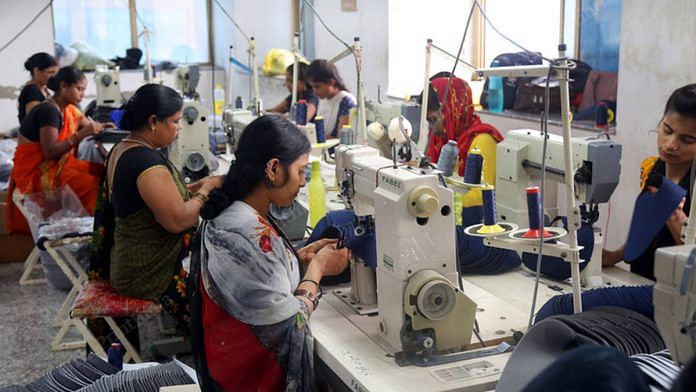New Delhi: A recent rise in women’s participation in India’s labour force was led by self-employment, likely driven by distress more than economic growth, a study said on Wednesday.
Self-employment among women was up 14 percentage points to nearly 65% between the quarter ended June 2018 and the quarter ended December 2022, according to a report titled “State of Working 2023” released by the Bangalore-based Azim Premji University.
“If participation rises due to economic growth and rising labour demand, (it) has very different implications than if it rises due to falling household incomes, which force women into self-employment,” the report said.
While more women moved into self-employment, earnings for this type of employment were only 85% of what they were in the quarter ended June 2019.
India’s female labour force participation rose to just under 33% after the Covid pandemic from 30% before but remains low. The wage gap, while narrower than in the early 2000s, is still wide – as of 2021-22, women earned 76% of what men did.
The Narendra Modi-led government has now proposed to reserve a third of the seats in the lower house of the parliament and state assemblies for women.
JOBLESS GROWTH
Modi, who remains popular among voters ahead of the national elections scheduled in May 2024, faces criticism for not creating enough jobs even though the Indian economy is among the fastest growing major globally.
The economy has added nearly 57 million jobs in five years to June 2022, leading to India’s workforce growing to 493 million, but 35 million people remained unemployed, according to government data analysed by the university.
Research by the university also found that growth in India has been less job-intensive than the average across developing countries.
“Over the long run, growth in gross domestic product (GDP)and employment growth have been uncorrelated in India suggesting that policies oriented towards achieving faster GDP growth will not necessarily speed up job creation,” the report said.
Unemployment is particularly high among the youth, with the unemployment rate for graduates in the below-25 age group rising as high as 42.3% as of June 2022, the report added.
However, the unemployment rate drops the older the graduates get, falling to 22.8% for the 25-29 age group and to 9.8% for the 30-34 age group.
“This indicates that eventually graduates do find jobs but the key questions are, what is the nature of jobs they find and do these match their skills and aspirations,” the report said.
($1 = 83.1710 Indian rupees)
(Reporting by Manoj Kumar in New Delhi and Ira Dugal in Mumbai; Editing by Janane Venkatraman)
Also read:



